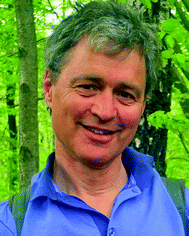Electrostatics and Soft Matter: a Themed Collection in memory of Per Linse
Christos N.
Likos
 a and
Joakim
Stenhammar
a and
Joakim
Stenhammar
 b
b
aFaculty of Physics, University of Vienna, Vienna, Austria
bDivision of Physical Chemistry, Lund University, Lund, Sweden
In addition to the scientific reasons, a recent sad event has motivated us to put together this Themed Collection on the topic of Electrostatics and Soft Matter. The collection is dedicated to the memory of Professor Per Linse, who tragically passed away in March 2017 at the age of 61. Per spent most of his scientific career at Lund University, Sweden, where he also received his PhD in 1984. Starting his PhD research with experimental NMR studies of ion binding to macromolecules, Per soon moved into the field of statistical-mechanical theory and simulations, where he quickly become one of the pioneers. After a postdoctoral stay at Stanford University, he returned to Lund where he set up a research program largely focusing on the fundamental and applied aspects of electrostatics in soft matter systems. His many important contributions to the soft matter field over the following decades encompassed studies of the structural properties of liquid and solid benzene, highly charged colloidal suspensions, structural properties of polyelectrolytes and their complexes, block copolymer self-assembly, polymer adsorption at surfaces, self-assembly of anisotropic colloids, and the role of dielectric discontinuities in colloidal systems. Over the course of his career, Per also developed a large software base for scientific computing, most notably the integrated Monte Carlo and molecular dynamics code MOLSIM, which is used by many scientists worldwide. During this software development, Per contributed significantly to the technical development of molecular simulations, in particular with respect to the Ewald summation technique as used when simulating charged, dipolar and polarizable systems.
Per was a leading scientist and a very kind, generous and patient mentor for a large number of younger scientists. We will remember him not only for his pioneering contributions to science, but also for his scientific integrity and generosity, and for his unparalleled human qualities as a colleague and friend, all clearly visible through his large number of scientific collaborations. To honour the memory and scientific legacy of Per Linse, we are pleased to present this Themed Collection on Electrostatics and Soft Matter. It contains a broad collection of high-quality papers from leaders within the field, several of which are previous collaborators and colleagues of Per.
Professor Per Linse. Photograph used with permission from Per Linse's family.
| This journal is © The Royal Society of Chemistry 2018 |

